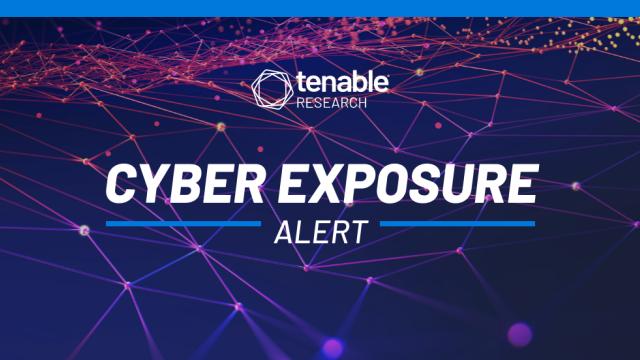- Finally, budget wireless earbuds that I wouldn't mind putting my AirPods away for
- I replaced my Linux system with this $200 Windows mini PC - and it left me impressed
- I recommend the Pixel 9 to most people looking to upgrade - especially while it's $250 off
- Google's viral research assistant just got its own app - here's how it can help you
- Sony will give you a free 55-inch 4K TV right now - but this is the last day to qualify
AA22-257A: Cybersecurity Agencies Issue Joint Advisory on Iranian Islamic Revolutionary Guard Corps-Affiliated Attacks

Several global cybersecurity agencies publish a joint advisory detailing efforts by Iranian-government sponsored threat actors exploiting vulnerabilities to enable ransomware attacks.
Background
On September 14, the Cybersecurity and Infrastructure Security Agency along with the National Security Agency, U.S. Cyber Command, Cyber National Mission Force, the Department of the Treasury, the Australian Cybersecurity Centre, the Canadian Centre for Cyber Security, and the U.K’s National Cyber Security Centre published a joint cybersecurity advisory (AA22-257A) detailing malicious activity linked to advanced persistent threat (APT) actors affiliated with Iranian’s Islamic Revolutionary Guard Corps (IRGC).
Analysis
This advisory builds on a previous joint cybersecurity advisory (AA21-321A) published in November 2021. In this new joint cybersecurity advisory, the agencies highlight several vulnerabilities used by the IRGC-affiliated APT actors to gain initial access to targeted entities from Log4Shell and associated vulnerabilities to ProxyShell and Fortinet flaws:
| CVE | Description | CVSSv3 | VPR |
|---|---|---|---|
| CVE-2021-44228 | Apache Log4j2 Remote Code Execution (RCE) | 10.0 | 10.0 |
| CVE-2021-45046 | Apache Log4j2 Denial of Service (DoS) and RCE | 9.0 | 9.2 |
| CVE-2021-45105 | Apache Log4j2 DoS | 5.9 | 6.7 |
| CVE-2021-34473 | Microsoft Exchange Server RCE (ProxyShell) | 9.8 | 9.7 |
| CVE-2021-34523 | Microsoft Exchange Server Elevation of Privilege (EoP) (ProxyShell) | 9.8 | 9.2 |
| CVE-2021-31207 | Microsoft Exchange Server Security Feature Bypass (ProxyShell) | 7.2 | 9.2 |
| CVE-2018-13379 | Fortinet FortiOS Path Traversal/Arbitrary File Read | 9.8 | 10.0 |
| CVE-2019-5591 | Fortinet FortiOS Default Configuration | 6.5 | 8.7 |
| CVE-2020-12812 | Fortinet FortiOS Improper Authentication | 9.8 | 10.0 |
*Please note: Tenable’s Vulnerability Priority Rating (VPR) scores are calculated nightly. This blog post was published on September 15 and reflects VPR at that time.
Additional Exchange Server vulnerabilities highlighted in advisory
In addition to the nine vulnerabilities listed above, the advisory also includes the following Microsoft Exchange Server vulnerabilities “as a precaution” because the agencies that authored this advisory “have seen the actors broadly target Microsoft Exchange servers.” However, there are no confirmed reports that these vulnerabilities were exploited in any IRGC-affiliated attacks:
While not mentioned explicitly in the advisory, we believe that organizations should also ensure they’ve applied patches for ProxyLogon and associated vulnerabilities, which preceded ProxyShell and may still be leveraged in attacks against Microsoft Exchange Servers:
| CVE | Description | CVSSv3 | VPR |
|---|---|---|---|
| CVE-2021-26855 | Microsoft Exchange Server (ProxyLogon) | 9.8 | 9.8 |
| CVE-2021-26857 | Microsoft Exchange Server Insecure Deserialization | 7.8 | 7.4 |
| CVE-2021-26858 | Microsoft Exchange Server Arbitrary File Write | 7.8 | 7.4 |
| CVE-2021-27065 | Microsoft Exchange Server Arbitrary File Write | 7.8 | 9.8 |
Organizations should also keep VMware products up-to-date
Outside of Microsoft Exchange Server, the advisory also notes that organizations should review recent advisories from VMware regarding critical vulnerabilities. The advisory does not mention any CVEs in particular. However, we believe the following CVEs, which have been exploited in the wild in the past, are vulnerabilities of concern:
Ransomware and extortion are the end-game for these attacks
The advisory notes that the IRGC-affiliated APT actors are leveraging these flaws to gain initial access to organizations in order to conduct “follow-on operations” that include both data exfiltration and encryption, which are key elements of ransomware and extortion-related attacks. Ransomware remains the greatest threat to global organizations today, as outlined in our Ransomware Ecosystem report. Many of the vulnerabilities referenced in the report overlap with the flaws mentioned in this joint cybersecurity advisory.
Legacy vulnerabilities continue to pose risk to organizations across the globe
From average cybercriminals and ransomware affiliates to threat actors with ties to APT groups, unpatched systems provide attackers with a reliable set of vulnerabilities that they can use to gain initial access into targeted networks globally. The advisory specifically details the fact that these threat actors are “exploiting known vulnerabilities on unprotected networks” and not “targeting specific targeted entities or sectors.”
We strongly recommend all organizations review the vulnerabilities identified in this advisory and apply patches as soon as possible, because whether it’s the IRGC-affiliated actors or ransomware affiliates, these vulnerabilities will continue to be leveraged for the foreseeable future.
The advisory also explicitly calls upon critical infrastructure organizations in particular to review and apply the recommended mitigations.
Identifying affected systems
A list of Tenable plugins to identify these vulnerabilities can be found here. This link uses a search filter to ensure that all matching plugin coverage will appear for the vulnerabilities referenced in this post.
Additionally, Tenable customers can utilize various scan templates that have been created for Log4Shell, including our Log4Shell Vulnerability Ecosystem scan template, ProxyLogon scan template, as well as our Ransomware Ecosystem scan template, which contains nearly 80 CVEs for vulnerabilities used in ransomware attacks.
Get more information
Join Tenable’s Security Response Team on the Tenable Community.
Learn more about Tenable, the first Cyber Exposure platform for holistic management of your modern attack surface.
Get a free 30-day trial of Tenable.io Vulnerability Management.

